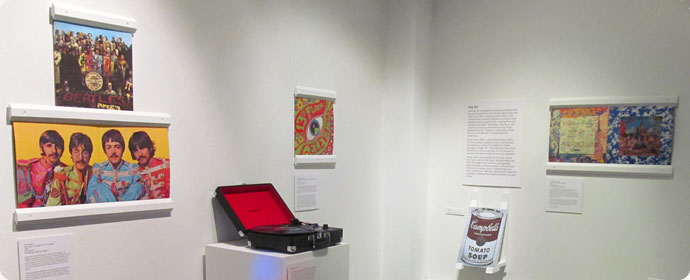
Strange Days: Vinyl Aesthetics of the Psychedelic Era
Between the eyes and ears there lie,
The sounds of color,
And the light of a sigh.
And to hear the sun, what a thing to believe.
But it's all around if we could but perceive.
The Moody Blues
“The Word”
With its roots in San Francisco in the mid-1960s, the Psychedelic movement marked a shift in social consciousness, music, and art. The Psychedelic movement emerged in American counterculture as a response to the political and sociological climate created by the Vietnam War and the growing popularity of hallucinogenic drugs, advocated for by the Beat Generation before it. In particular, LSD, or acid, served as a catalyst for the movement, providing users with altered perceptions of reality, more vivid sensory experiences, and a sense of connectedness with nature and one another.
A transition in album cover design occurred as a result of the new experiences and perceptions produced through the use of psychedelic drugs. These altered states of reality inspired bands and cover designers to create an integrated audio-visual experience. Suddenly, the popular music album covers featuring photographs of the band or artist were replaced by an explosion of psychedelic designs.
Distinguishing features of psychedelic art include: the use of vivid colors, flowing organic patterns, energetic designs, strange or fantastic subject matter, and the joining of disparate times and cultures through photomontage. The influences of the Pop Art, Art Nouveau, and Surrealism movements are strongly reflected through the characteristic designs of Psychedelic era album cover art.
Curated by members of Curatorial Practice,
a core course in the NIU Museum Studies Program:
Carmin Berchiolly
Rebeka Jacobson
Keith Ulrich
